
views
What is an elder brain in D&D 5e?
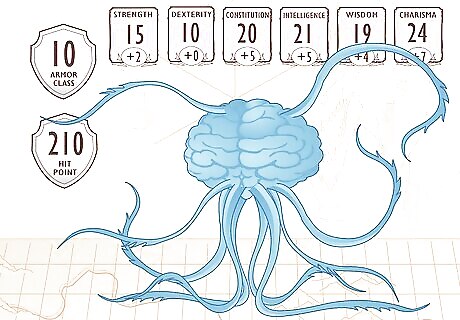
An elder brain is the final stage of life for a mind flayer. Mind flayers are aberrations that can control and consume the minds of other beings—and elder brains represent the pinnacle of what mind flayers can become. They resemble large brains with tentacles; fittingly, they’re devastatingly intelligent and use their psionic powers to guide their communities, dreaming of a world totally dominated by mind flayers. Size: Large Alignment: Typically lawful evil Armor class: 10 Hit points: 210 (20d10 + 100) Speed: 5 feet (walking), 10 feet (swimming) Ability scores: 15 (+2) Strength, 10 (+0) Dexterity, 20 (+5) Constitution, 21 (+5) Intelligence, 19 (+4) Wisdom, and 24 (+7) Charisma Senses: Blindsight (120 feet), passive Perception 14 Saving throws: Intelligence (INT) +10, Wisdom (WIS) +9, and Charisma (CHA) +12 Skills: Arcana +10, Deception +12, Insight +14, Intimidation +12, and Persuasion +12 Languages: The elder brain understands Common, Deep Speech, and Undercommon but can’t speak. It also has telepathy for a range of 5 miles. Challenge rating: 14 (worth 11,500 experience points)
Elder Brain Lore in D&D 5e
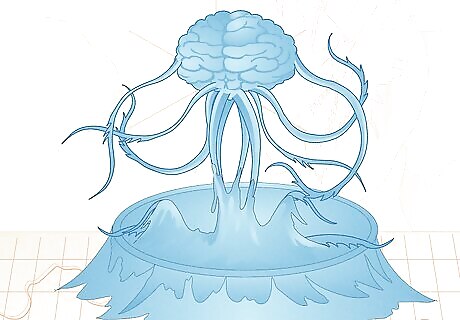
Elder brains are large, bulky brains living in brine pools. Physically, elder brains are fearsome; their strong psychic powers stem from the brains of many long-dead mind flayers that make up their body mass. Being made from brains also gives the elder brain telepathic abilities, and they have several large tentacles attached to their brain-like forms. Elder brains rarely move from their brine pools; they tend to stay rooted there and communicate telepathically with all allies in the area.

Elder brains serve as the leaders of mind flayer societies. Because they’re made of so many different mind flayer brains, they become living archives, holding a great deal of knowledge about the world and their community’s history. Elder brains typically lead the mind flayer colony they reside in, acting as a political and military advisor and directing all the mind flayers that live there. Thus, provoking an elder brain in D&D usually means facing off against its entire colony, too—or at least any nearby allies. Often, when a mind flayer becomes aware it’s reaching the end of its lifespan, it voluntarily sacrifices its brain to the elder brain and merges with it, strengthening the elder brain’s powers. When this happens, the mind flayer’s consciousness is completely destroyed, with only its knowledge and ideas passing to the elder brain. However, elder brains typically keep this fact a secret.
Elder Brain Traits & Attacks
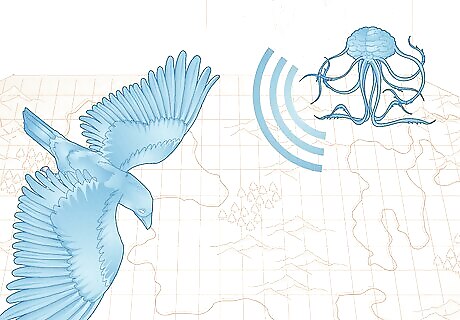
Creature Sense Elder brains have heightened awareness and can detect any creatures within 5 miles that have an Intelligence score of 4 or higher. They can tell how far away each creature is, which direction they’re in, and what their Intelligence score is (but don’t glean any other information). However, spells like Mind Blank and Nondetection can block an elder brain’s Creature Sense.

Spellcasting (Psionics) Elder brains have a limited repertoire of spells and use Intelligence as their spellcasting ability. An elder brain’s spell save DC (difficulty class) is 18, and it can cast spells without needing any extra components. Spells include: At will: Detect Thoughts and Levitate Three times per day: Modify Memory Once per day each: Dominate Monster and Plane Shift (can only cast on itself)
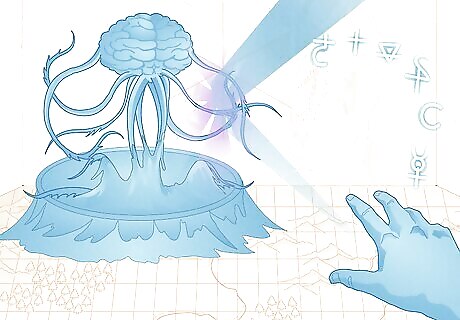
Resistances Elder brains have innate magic resistance, meaning they have advantage on saving throws against spells and magical effects. Because they’re legendary creatures, they also have access to Legendary Resistance. When an elder brain fails a saving throw and uses Legendary Resistance, it can choose to succeed on the saving throw instead. Elder brains can use Legendary Resistance up to 3 times daily. Once depleted, they can’t use this feature until the next day. Advantage means the elder brain can roll its saving throw twice and take the higher result, making success more likely. Similarly, disadvantage means rolling twice and taking the lower result, making failure more likely.
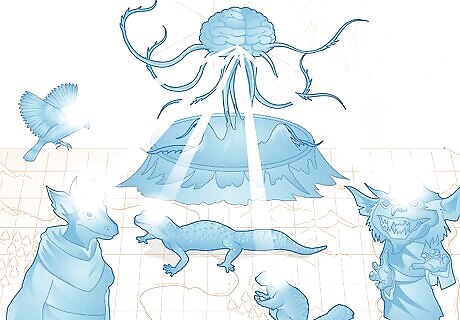
Telepathic Hub Elder brains have strong telepathic abilities; they can use telepathy to start (and maintain) conversations with as many as 10 creatures at a time. If an elder brain allows it, those creatures can also hear one another when connected to the elder brain telepathically.
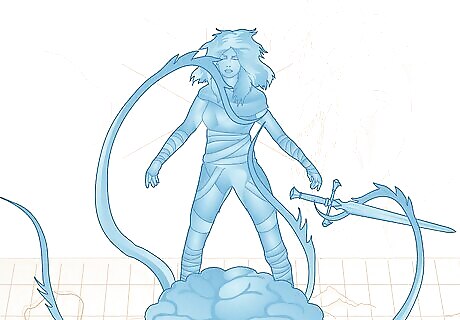
Tentacle Tentacle is an elder brain’s only true physical attack. With this action, an elder brain can use its tentacle to deal 4d8 + 2 (an average of 20) bludgeoning damage to its target. Additionally, targets classified as Huge or smaller become grappled and must beat a DC 15 Strength check to escape, taking 1d8 + 5 psychic damage at the start of each turn until the grapple ends. Tentacle is a melee weapon attack. Elder brains get a +7 to hit, have a reach of 30 feet, and can target 1 creature per attack. Elder brains can have up to 4 targets grappled at a time.
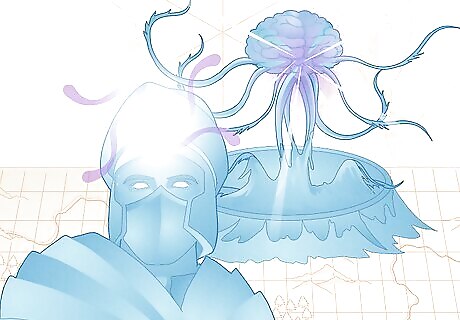
Mind Blast Mind Blast lets an elder brain release a torrent of psychic energy, forcing all creatures of the elder brain’s choice within 60 feet to make a DC 18 Intelligence saving throw. On a failure, affected creatures take 32 (5d10 + 5) psychic damage and are stunned for 1 minute. On a successful save, a creature is unaffected by Mind Blast. Targets stunned by this ability can reroll their saving throws at the end of each turn. When they finally succeed, they’re no longer stunned. After an elder brain uses this ability, it must roll a 5 or 6 on a d6 (6-sided die) to recharge the ability and use it once more.

Psychic Link This ability depends on the elder brain’s Creature Sense trait. When an elder brain can sense an incapacitated creature, it can establish a psychic link with them, allowing the elder brain to perceive everything that creature does. The target only becomes aware that something was linked to it when it’s no longer incapacitated, and the elder brain can end this connection anytime. When it becomes aware of the connection, a target can use an action to try and break the psychic link—but it must first pass a DC 18 Charisma saving throw, On a successful save, the target creature can break the link but will also take 10 (3d6) psychic damage. However, this connection will also automatically end if the target and elder brain are more than 5 miles apart (with no damage or other consequences). Elder brains can form up to 10 psychic links with different creatures at a time.
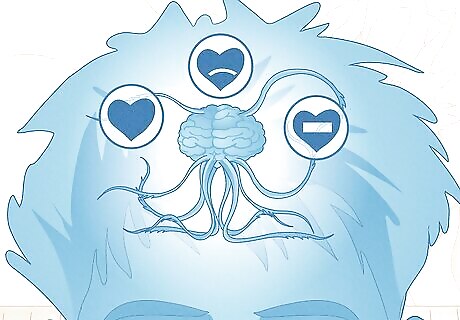
Sense Thoughts When an elder brain forms a psychic link to a creature (covered above), it can also sense the creature’s reasoning, emotional state, and the most prominent thoughts in its mind. This includes worries, and things the target creature loves or hates. If it wishes, the elder brain can try to influence the target into believing or feeling one particular thing with a Deception check. Creatures affected by Sense Thoughts can contest an elder brain’s Deception check with an Insight check. If the elder brain wins the contest, its target will believe the lie for 1 hour or until they discover evidence of the lie.
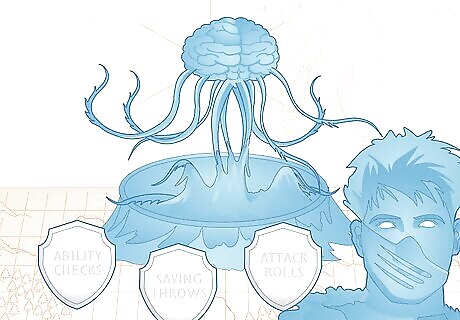
Legendary Actions In D&D 5e, legendary creatures are especially powerful—so they get special legendary actions in addition to their regular abilities. Elder brains can take 3 legendary actions per round; however, they can only take 1 action at a time, and they must do so at the end of a different creature’s turn. All legendary actions are regained at the start of the elder brain’s turn. They include: Tentacle. The elder brain gets to make an extra tentacle attack (discussed above). Break Concentration. The elder brain can target a creature with a psychic link within 120 feet. The elder brain can break the creature’s concentration on a spell and deal 1d4 psychic damage per level of the spell. Psychic Pulse. The elder brain can target a creature with a psychic link within 120 feet. Any creatures the elder brain considers enemies within 10 feet of the target take 10 (3d6) psychic damage. Sever Psychic Link. The elder brain can take an action to break its psychic link with a creature within 120 feet, giving that creature disadvantage on ability checks, saving throws, and attack rolls until the end of the creature’s next turn.
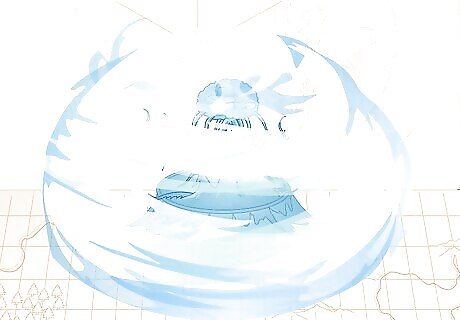
Lair Actions If the elder brain is within its lair (an area designated as the elder brain’s home turf), it can use lair actions, which are area effects that trigger on initiative count 20 of each round (losing initiative ties). The same lair action can’t be used for 2 rounds in a row. Elder brain lair actions include: Wall of Force. The elder brain casts the Wall of Force spell. Inspiration. The elder brain can target a friendly creature within 120 feet and inspire it, giving the creature advantage on 1 attack roll, ability check or saving throw before the end of its next turn. Anchor. The elder brain can target a creature within 120 feet and anchor it in place, rendering it unable to leave its current space if the creature fails a DC 18 Charisma saving throw. At the end of each turn, the target can repeat the saving throw—and end the effect on a success.
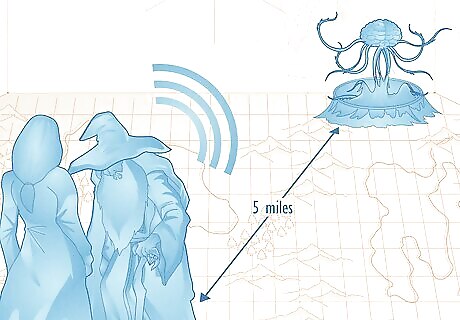
Regional Effects The region around an elder brain’s lair can also be affected by its presence. Within 5 miles of an elder brain’s lair, the surrounding territory features one (or more) of these effects: Creatures within the 5-mile area feel like they’re being followed at all times (even if they’re not). The elder brain can overhear any telepathic conversation within 5 miles. If the creature that initiates the conversation succeeds on a DC 18 Insight check, they’re aware that something is listening in on the conversation. All creatures that have a psychic link with the elder brain hear soft, unintelligible whispers in the depths of their minds. If an elder brain dies, all regional effects around its lair end immediately.
How to Use Elder Brains in Combat (For DMs)
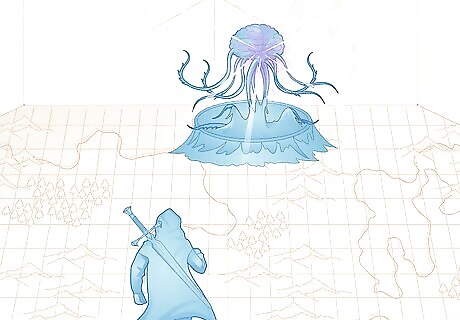
Let the elder brain anticipate the players’ arrival. Since elder brains have Creature Sense, it’d make sense for an elder brain to be well-prepared for a fight (or any other interaction) since it can sense the PCs coming from miles away. Consider having the elder brain send its minions to ambush or distract the PCs before they can reach its lair.

Try to dominate one of the PCs as the elder brain. Elder brains can cast Dominate Monster once per day—meaning they have the chance to control one of the PCs in battle if the spell works as intended. Take control of one PC—ideally a healer or spellcaster, since they’re invaluable in battle—and have them turn on their allies, defending the elder brain and sowing chaos on the battlefield. Even if you don’t dominate one of the PCs (or the spell doesn’t work), you can still use the Elder Brain’s Psychic Link ability to peer into each PC’s mind and find ways to manipulate them. For example, you could have the elder brain detect a PC’s greatest fear and create illusions of those fears in the PC’s mind. Alternatively, the elder brain could sense a PC’s greatest desire and try to tempt them away from attacking with false promises of power or influence.

Target as many PCs as possible with Mind Blast. The ability to stun and deal damage at the same time is definitely a powerful one! If you’re the DM (Dungeon Master) paying an elder brain, try to use its Mind Blast to maximum effect, catching as many PCs as possible inside the blast's range. However, try to avoid hitting the elder brain’s allies if you can. The elder brain’s tentacle attack is also a great way to finish off stunned enemies on the battlefield. Once a PC is stunned, it’s much easier to grapple them with a tentacle (since they can’t really fight back while stunned).

Use lair actions to create obstacles around the brain’s pool. Elder brains can’t move around too much from their brine pools during battle—but, with some maneuvering, they don’t need to. Instead of moving the elder brain, make it harder for PCs to reach the elder brain and start dealing melee weapon damage to it. Summon the elder brain’s minions, use its lair actions, and try the following: Environmental challenges. Try making the environment more difficult to navigate; for example, you might add a few areas so saturated with psionic energy that they can cause temporary madness when a PC enters them. Illusions. Have the elder brain create a psychic link with the PCs and attempt to deceive them with illusions, turning them on one another or creating illusionary foes for them to fight. Reinforcements. Have the elder brain call for more allies midway through the battle. It could summon mind flayers, intellect devourers, or some other minion.
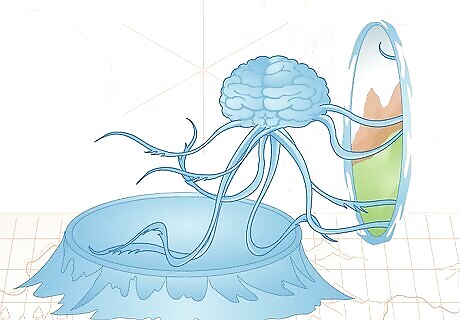
Cast Plane Shift to escape if the elder brain starts losing the battle. Elder brains are capable of casting Plane Shift once per day. They’re also smart, and far more likely to want to flee and fight another day instead of stick around and perish at the PC’s hands. So, if the fight starts going badly for the elder brain, have it use its Plane Shift ability to try and get away. You can also give the elder brain a place to retreat. For example, maybe the brine pool it lives in isn’t fully shallow—there could be deeper areas of the pool where the elder brain can submerge and lick its wounds.
How to Defeat an Elder Brain (For Players)
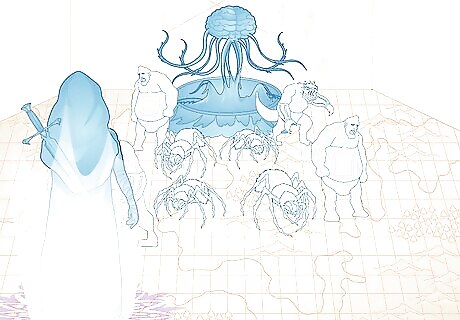
Use Nondetection to stop the elder brain from sensing you. Want to ambush the elder brain, or at least avoid a scenario where it has enough time to call lots of minions to its aid? Cast the Nondetection spell on as many PCs as possible so the elder brain won’t be able to “see” the party coming with its Creature Sense feature. Nondetection is a 3rd-level abjuration spell that hides targets from any kind of divination magic. It’s available to bards, wizards, and rangers. The Mind Blank spell can also hide your PC and their comrades from an elder brain’s psionic influence—but as a powerful 8th-level spell for bards and wizards, it’s much more costly to cast.
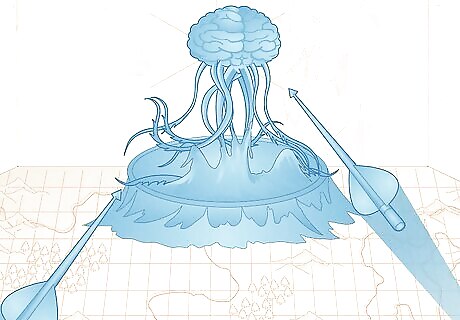
Target the elder brain with ranged attacks when possible. Elder brains have magic resistance, and getting within melee range of them makes your PC vulnerable to tentacle attacks as well as the elder brain’s Mind Blast ability. However, when you attack an elder brain from a distance (especially with physical weapons like arrows), it’ll have fewer defenses against those attacks. Send stronger, high-Constitution party members like barbarians, fighters, and paladins into melee combat with the elder brain. Have all other PCs stand back and rain damage onto the brain from afar! For all their power, elder brains have a very low armor class—10. That means they’re fairly easy to hit—so keep the ranged attacks coming, and you’ll whittle down the brain’s hit points (health) in no time. There’s nothing wrong with casting spells at an elder brain either—just remember that its magic resistance gives it advantage on saving throws against spells.
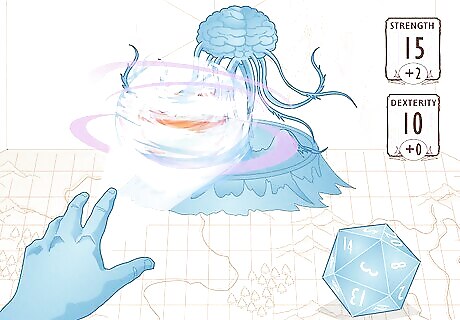
Exploit the brain’s weak Strength and Dexterity saving throws. Try exposing the elder brain to spells and effects that force it to make Strength (STR) and Dexterity (DEX) saving throws since those are the brain’s two lowest stats. They only have a +2 to STR saves and a +0 to DEX saves, making them much more likely to fail those saving throws. For example, you could: Cast a spell that requires a DEX save, like Lightning Bolt or Fireball (even though the elder brain would get advantage on the save because of its magic resistance). Try to force the elder brain out of its brine pool and make it vulnerable with a spell that requires a STR save, like Thunderwave. Attempt to grapple the elder brain’s tentacles with a STR check and pin them down to stop them from grabbing and attacking other PCs.



















Comments
0 comment